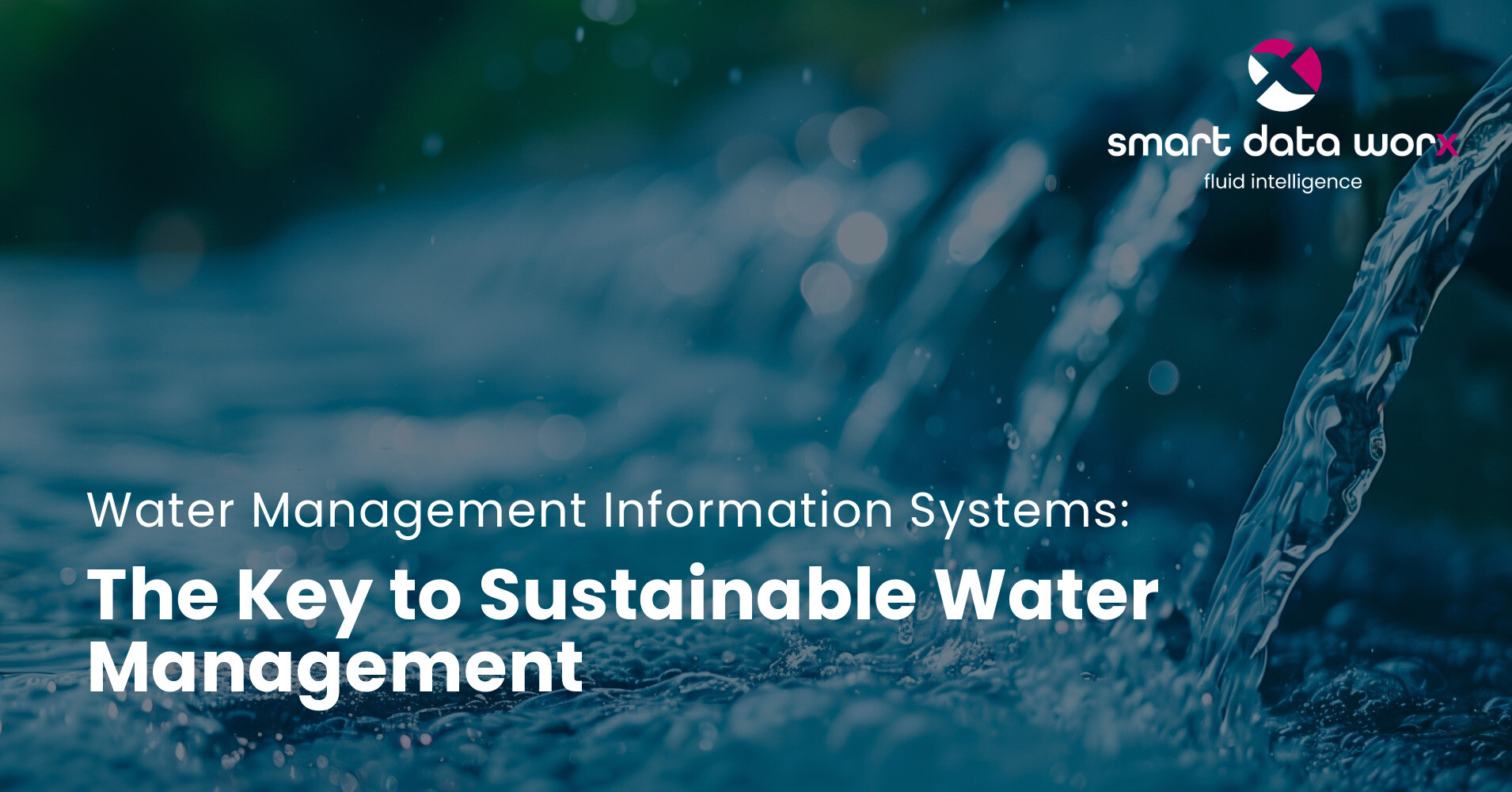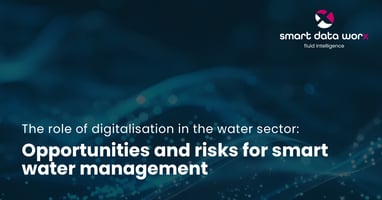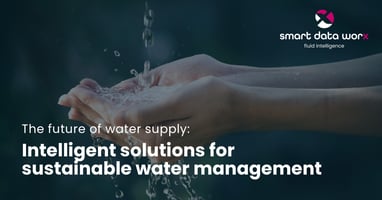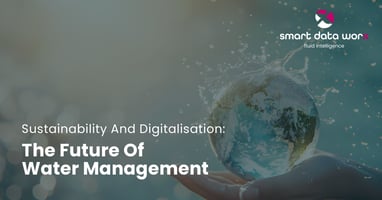Digitalisation is changing almost every area of our lives, including the water sector. The...
Water management information systems: the key to sustainable water management

Sustainable water management is one of the central challenges of our time. In light of global climate change, growing urban areas, and the increasing strain on our natural water resources, modern strategies must be developed to use and protect water efficiently. Water management information systems (WMIS) play a key role in this, as they enable the collection, analysis, and implementation of data into decision-making processes. In this article, I would like to provide you with a deeper insight into the importance and functionality of such systems and show how they can improve water management.
What are water management information systems?
Water management information systems are specialized IT systems that collect, process, and visualize data on water quality, quantity, and availability in real time. They integrate various data sources such as hydrological monitoring stations, meteorological data, flow measurements, and information on water management infrastructures like dams, canals, or sewage treatment plants.
The goal of these systems is to gain a comprehensive understanding of water resources and their dynamics to make informed water management decisions. WMIS use modern technologies such as Geographic Information Systems (GIS), sensors, databases, and modeling to provide precise and current information that is essential for planning, monitoring, and controlling water management.
How do water management information systems work?
A water management information system consists of several components that work seamlessly together to capture, store, and analyze data:
-
Data collection: Sensors and monitoring stations at various locations (e.g., rivers, lakes, reservoirs) continuously provide data on water level, flow, temperature, salinity, and other parameters. This data is transmitted in real time and stored in central databases.
-
Data processing and modeling: The collected data is analyzed using algorithms and models. Hydrological models, for example, help predict water availability in different regions under various scenarios. Climate models enable the prediction of rainfall patterns and extreme weather events that can affect water resources.
-
Visualization and decision support: The results of the analyses are presented in the form of dashboards and maps. This makes it easier to interpret and understand complex data. Decision-makers such as water utilities, municipalities, or environmental authorities can then make informed and timely decisions.
-
Integration with existing infrastructures: A modern WMIS is capable of integrating with other systems, such as the control of water supply networks, irrigation technology, or flood protection. This integration allows the system to react quickly to changes, such as automatically adjusting water supply or detecting flood risks early.
Applications of water management information systems
-
Flood forecasting and management: A typical example of using a WMIS is flood forecasting. By analyzing flow data and rainfall forecasts, water management authorities can detect potential flooding early and take protective measures in time. This can save lives and prevent severe damage to infrastructure and nature.
-
Drinking water supply and treatment: WMIS are also crucial for optimizing drinking water supply. They help monitor water quality in real time and ensure that only clean water enters the supply network. Furthermore, they facilitate the detection of leaks and the efficient use of resources for water treatment.
-
Sustainable irrigation: In agriculture, especially in water-scarce regions, WMIS can control the efficient use of irrigation systems. By analyzing soil moisture, weather data, and water availability, water consumption is optimized, which not only saves costs but also reduces water use to a sustainable level.
-
Adaptation to climate change: Climate change presents new challenges for water management, as rainfall patterns and temperatures change. WMIS help monitor these changes and develop scenarios for better future utilization of water resources. This enables the development and implementation of adaptation strategies to climate change, such as reforestation of watersheds or the creation of retention basins.
-
Ecological monitoring: Besides the sheer quantity of water, water quality is also of great importance. WMIS enable continuous monitoring of pollutants and nutrients in bodies of water, which is crucial for preserving ecosystems and preventing eutrophication.
Benefits of using water management information systems
Increased efficiency
The automation of data collection and analysis through water management information systems not only results in significant time savings but also optimizes resource use. Data that would have to be collected and analyzed manually is available in near real-time in a WMIS. This means that changes in water resources or climatic conditions can be reacted to much faster. Automated processes eliminate sources of error associated with manual entries and evaluations, ensuring greater accuracy and reliability of the collected data. This increase in efficiency is crucial when responding quickly to changing environmental conditions, whether due to sudden rainfall events or impending water shortages.
Improved decision-making
Access to accurate, current, and comprehensive data enables decision-makers to make informed and strategic decisions. Water management information systems collect data from various sources such as climate models, satellite observations, and local monitoring stations, and combine them to provide a clear and comprehensive overview of the current state of water resources. These detailed insights form the basis for the development of long-term water management strategies and help prioritize projects. They also facilitate coordination between different stakeholders, such as authorities, agricultural businesses, and municipal water suppliers. Improved decision-making can reduce resource conflicts and enhance the effectiveness of water use and treatment measures.
Cost reduction
A well-functioning water management system can lead to significant savings over the long term by avoiding inefficient practices and unnecessary costs. Leaks, which often go unnoticed, can be quickly detected through continuous monitoring of water pressure and consumption. Additionally, precisely adjusting water distribution to actual needs helps minimize waste. In agriculture, targeted irrigation through intelligent systems that analyze real-time data on soil moisture and climatic conditions can optimize water use and reduce costs. Wastewater treatment can also be made more efficient through data-driven optimization techniques, saving costs while protecting the environment. Over time, efficient water management lowers operating costs for businesses and municipalities while ensuring more sustainable use of resources.
Sustainability
The sustainable use of water is one of the central challenges of our time. Water management information systems enable the adjustment of water resource use to current and future needs, while ensuring that these resources are preserved for future generations. Through precise monitoring and analysis of water resources, measures for water protection can be better planned and implemented. This not only helps reduce water losses but also protects the environment and maintains biodiversity in water bodies. WMIS provide the foundation for monitoring ecological water quality standards and ensuring that water is protected both as a vital resource and as part of the ecosystem. Responsible water management through data-supported systems promotes a sustainable future in which water is available in sufficient quantities for all.
Early warning systems
Another standout feature of water management information systems is the integration of early warning systems, which allow for a proactive response to natural disasters. Whether it is sudden flooding due to heavy rainfall or impending drought periods, timely warnings allow affected regions to take measures before the damage escalates. By analyzing weather forecasts, hydrological models, and historical events, potential hazards can be detected early, and preventive measures can be initiated. This could include evacuating at-risk areas, activating flood protection systems, or rationing water distribution during droughts. Early warning systems based on WMIS are an essential component of modern risk management and contribute significantly to reducing the impacts of natural disasters and increasing the resilience of affected regions.
Challenges and Outlook
Despite the many benefits, there are also challenges in implementing and using water management information systems. The costs of developing and operating such systems can be high and require close cooperation among various stakeholders—from governments to private companies to academia. Additionally, data privacy and the security of sensitive environmental data are critical issues that must not be overlooked.
However, technology is constantly evolving, and with the growing spread of IoT (Internet of Things) and improvements in data analysis tools, the use of WMIS is becoming more efficient and cost-effective. In the future, municipalities and businesses worldwide will increasingly rely on water information systems to address the challenges of water management in an increasingly stressed world.
Conclusion
Water management information systems are an indispensable tool in modern water management. They offer the ability to collect, analyze, and utilize data in real time for decision-making. In a world where water resources are becoming increasingly scarce and climate change, urbanization, and environmental destruction pose new challenges, these systems are crucial for finding and implementing sustainable solutions. The use of such systems is an investment in the future that benefits both the environment and future generations.


